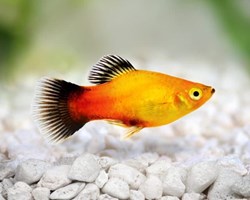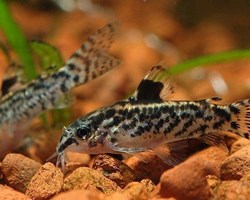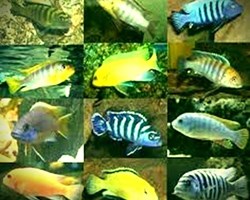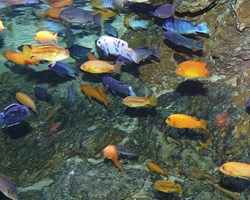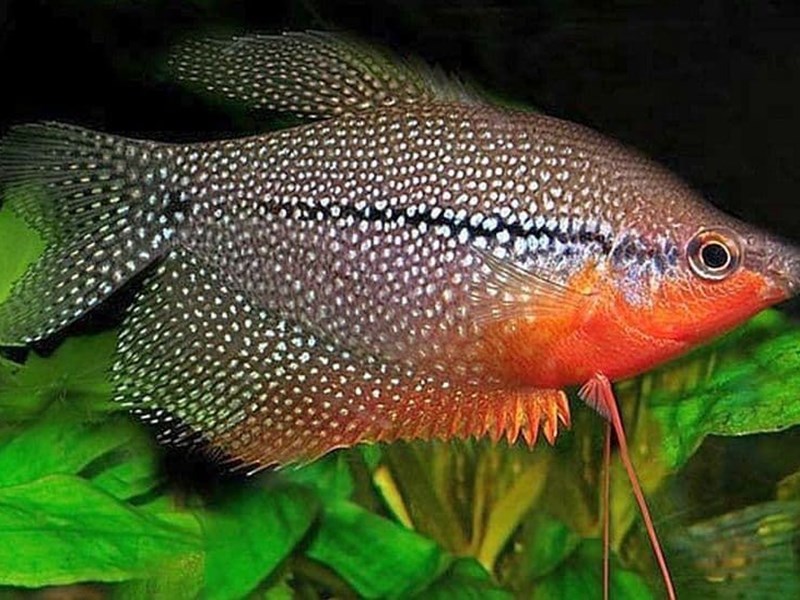
THE SCIENTIFIC DATA OF YOUR FISH ARE VERY IMPORTANT FOR ITS BEST CARE:
Scientific name: Trichogaster leeri
Common Name: Pearl Gourami, Mosaic Gourami
Aquarium size: 100 to 150 liters
Temperament: Peaceful and shy
Temperature: 22ºC to 27ºC
pH: 6 to 7.5
Diet: Omnivore
Length: Up to 12 cm.
The Pearl Gourami is an aquarium fish, which is also well known by its scientific name: Trichogaster leeri.
It belongs to the Belontidae species (Betta fish, Paradise fish…), Trichogaster family.
This is a well-known and popular fish among aquarium enthusiasts, as it is easy to acclimatize and reproduce, being within the reach of any beginner.
In the aquarium they rarely exceed 7 or 8 centimeters, but in freedom they can measure up to 12 centimeters.
They have a flattened and elongated body, although they give the impression of being somewhat wider than they really are because of their anal fin, which runs through the entire belly of the fish and practically joins the caudal fin.
The pectoral fins are transformed into barbels, which serve as a sensory organ to navigate in situations with murky waters.
Background color silvery to brown, with some shades of violet, covered with dots of a lighter color.
Its body is crossed horizontally by a dark brown zigzagging band that goes from the mouth to end near its caudal fin.
Like most Trichogaster, it has a black spot at the base of its tail.
Sexual dimorphism is often seen as the fish ages.
When they are young specimens, it is more difficult to appreciate the difference, but as time goes by, it can be seen how the male has more elongated anal and dorsal fins than the female, ending slightly pointed.
In the spawning season, the males intensify their color and acquire an orange tone in their ventral area.
The coloration of the female is duller, with colors tending to brown and a whitish belly.
They are also usually slightly smaller than the males, and their fins are rounded instead of ending in a point.
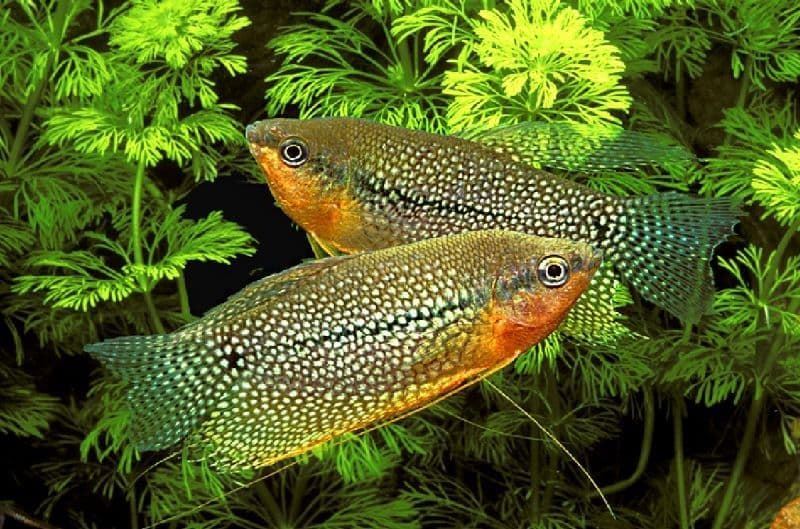
KNOWING WHERE THEY COME FROM AND HOW THEY LIVE IN FREEDOM YOU WILL BE ABLE TO KNOW MORE ABOUT THE BEST CONDITIONS OF YOUR FISH:
They are present in many locations, although their countries of origin are Malaysia, Borneo and Sumatra.
They live in ponds, streams, swamps and rivers with calm currents, with a high density of vegetation.
They need a spacious, densely planted aquarium in which floating aquarium plants must be included.
As with Bettas, they have an organ called a labyrinth to breathe on the surface, so a relatively warm and humid surface environment must be provided.
As they are calm water fish, it is necessary to ensure that the current inside the aquarium is rather weak.
The temperature of the water must be maintained in the environment of 22ºC to 27ºC, with a pH between 6 and 7.5.
They prefer soft, slightly acidic waters.
In its environment of origin it inhabits swampy ponds, with a large amount of organic matter in suspension, poor in salts and with an acid pH.
The only abundant element in solution is iron, which gives water its characteristic red color.
Obviously it is not necessary to recreate exactly these conditions in an aquarium.
With breeding on farms, it has been possible to “reduce” the requirements in terms of water conditions, even reaching or living without problems in hard and alkaline waters.
However, the appropriate conditions for this species are a Ph between 6 and 7 (better between 6.5 and 7) and soft (TAC less than 4º French, a French degree of hardness is equal to 10 mg of calcium per liter of water).
They are fish that like heat (at 27º C they are really comfortable), and they tolerate little or no current, they are also shy fish that do not like excessive lighting and that require abundant shelters in which to hide to be quiet.
Due to these special characteristics, the ideal companions of the pearl gouramis are other species of Gouramis, colisa and betas, which have similar water and temperature requirements to the pearl gourami.
The aquarium for gouramis should never be too deep, no more than 30 cm, and it is important that it is wide.
At the water temperature at which these fish can be kept, the amount of dissolved oxygen is low, and we will not contribute at all to the survival of the aquarium inhabitants if we hinder gas exchange with a small contact surface with the air in relation to volume.
The minimum required aquarium size for gouramis should be 100 l.
They are fish that usually swim in the upper and middle strata of the aquarium, although it is not uncommon for them to occasionally go down to "explore" the bottom.
They are fish that originally come from ponds or lagoons in which the surface of the water is completely covered by floating plants, the light that arrives is very soft, so we must reproduce the lighting conditions.
It is highly recommended to use floating plants such as Salvinia or Riccia.
All floating plants need intense lighting, which must also be located at a sufficient distance so as not to burn the leaves.
Pearl gouramis can live in waters that do not suit their needs and at lower temperatures, although their colors will always be duller.
This species is very sensitive to sudden changes in the physical and chemical conditions of the water, so we must be very careful when we change the water.
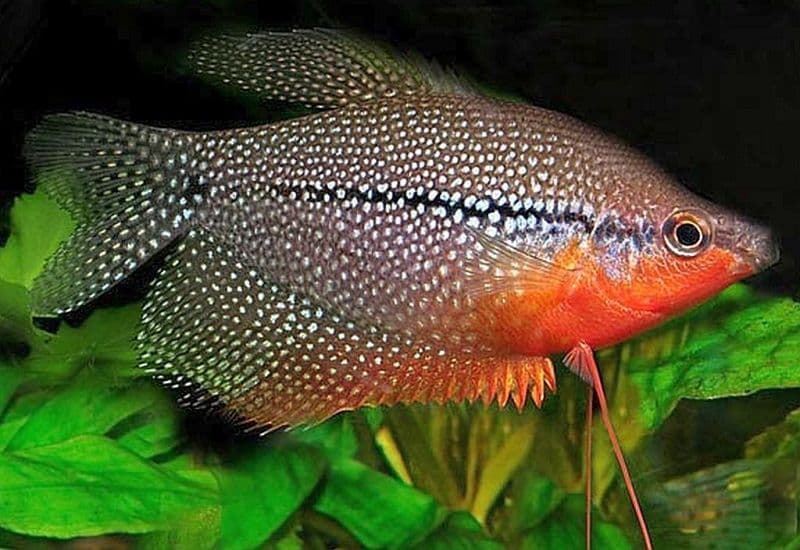
GIVING THE BEST FOOD IS ESSENTIAL FOR YOUR FISH:
They are not going to give us problems with feeding, since they are omnivores.
The basis of the diet must be built from quality dry food in flakes and granules.
Ideally, it should be supplemented with insect larvae.
Glu Glu Pet recommends brine shrimp or any other freeze-dried product.
Frozen products can also be used.
They should be fed at least twice a day, with whatever food they can eat for a few minutes, without ending up at the bottom of the tank.
The gouramis are omnivorous animals with a clear predominance of the animal component over the vegetable in their diet, they do not usually bite plants, and prefer algae as a vegetable part of their diet.
They accept flake food without problems, but if you want to have healthy animals that are capable of reproducing, you will have to resort to natural food (alive or frozen).
Despite its size, it must be said that pearl gouramis have a proportionally very small mouth, which must be taken into account.
Two meals throughout the day would be the most indicated, one with flake food and the other with natural.
IF YOU KNOW WHAT THEIR BEHAVIOR IS AND ITS COMPATIBILITY WITH OTHER FISH, YOU CAN GIVE THEM EVERYTHING THEY NEED:
They are very peaceful, shy and reserved fish that need to live in a large aquarium, with a profusion of vegetation and hiding places where they can take refuge.
It can coexist with other species of fish, which have similar habits and above all, calm.
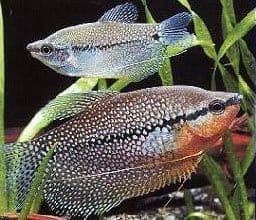
THEY REPRODUCE VERY EASILY:
The popularity of the Pearl Gourami is based on the fact that they are easy to acclimatize, they are calm, but they are also relatively easy to breed for a beginner.
They can reproduce in a community aquarium, but it is recommended to set up a spawning aquarium, which should have about 50 liters for an adult pair of Gouramis.
To spawn they need the aquarium to have a good amount of surface plants, and the bottom in dark tones.
Around surface plants, the male will build his bubble nest in which the female will lay about 1,000 eggs.
It is important that the male is kept separate from the female until mating time, but there must be visual contact.
Once the eggs are laid, the female will be removed from the aquarium.
The fry will be born after a little over forty-eight hours, remaining in the bubble nest for about four days.
Subsequently, the male should be removed.
The fry will be fed at first with infusoria, as they grow they can be given artemia nauplii.
Two days after hatching the fry are able to swim by themselves, an appropriate time to remove the male and reduce the height of the water to 10 cm.
The first 5 – 7 days the fry can only feed on infusoria or liquid preparations for fry, from this moment they can start feeding on artemia nauplii and micro worms.
From 4 to 6 weeks they will accept powdered feed. As they develop, the size of the prey will increase. At least 50% of the water should be changed every two days.
Its growth is very slow and irregular, and selections will often have to be made.
From the fourth week you can go raising the water level to a level of 2 to 3 cm per week.
As in the case of other labyrinth fish, the period of its formation is critical.
The air above the water must be at the right temperature and humidity, hence the importance of the lid.

